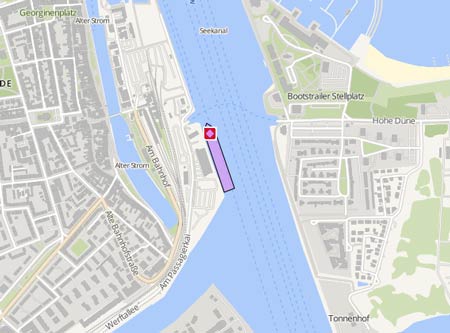AMBER BRITTANY
Latest ports
Latest Waypoints
Latest news
NTSB Report: Phone use, lack of experience and outdraft current caused allision
The National Transportation Safety Board (NTSB) has determined that an inexperienced pilot’s failure to compensate for outdraft current, combined with cell phone use, led to the allision of the 'Amber Brittany' with a vane dake on the Ohio River on March 8, 2024. The tug was pushing 15 barges and navigating out of the McAlpine Locks in Louisville, Kentucky, when the accident happened. The allision caused the tow to break apart, sending 10 barges downstream and resulting in approximately $1.3 million in damage to barges, cargo, and dam gates. The accident sequence began as the 'Amber Brittany' made a port turn while passing under the L&I Railroad Bridge. The vessel encountered a strong outdraft current, created by nearly fully open dam gates and rising river levels. Despite the pilot’s attempts, they failed to effectively counteract the current’s force. Two critical factors contributed to the accident. First, the pilot lacked experience navigating the McAlpine Locks and Dam area. While company personnel believed the pilot had previous Ohio River experience, they later admitted to investigators having no prior operations in the area. Second, cell phone records showed the pilot was actively using their personal phone immediately before the incident, with text messages coinciding with the vessel’s departure from its intended course. The safety board specifically addressed the dangers of mobile device use in challenging navigation situations. Using cell phones and other wireless electronic devices has been demonstrated to be visually, manually, and cognitively distracting, and sending or reading text messages is potentially even more distracting than talking because texting requires visual attention to the display screen of the device. Rull report: https://www.ntsb.gov/investigations/AccidentReports/Reports/MIR2514.pdf
Upload News


